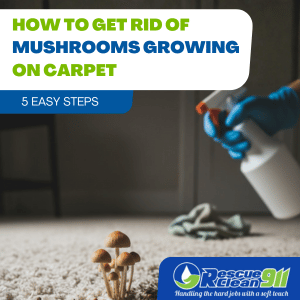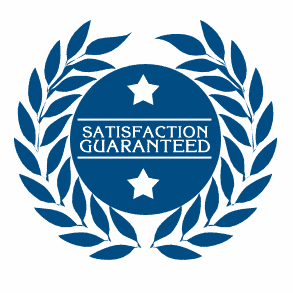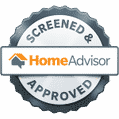The causes of black mold in insulation are often linked to excess moisture, poor ventilation, and structural issues within a home.
Black mold, scientifically known as Stachybotrys chartarum, thrives in damp environments and poses significant health risks, particularly to individuals with weakened immune systems or respiratory issues.
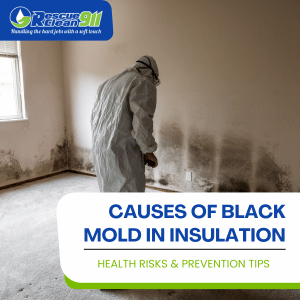 Black mold produces spores that can be inhaled. Exposure to these spores can cause a variety of health problems, including:
Black mold produces spores that can be inhaled. Exposure to these spores can cause a variety of health problems, including:
allergic reactions
respiratory infections, and
even neurological problems.
Symptoms of black mold exposure include coughing, sneezing, watery eyes, runny nose, difficulty breathing, headaches, fatigue, and skin irritation.
Understanding what triggers mold growth in insulation is the first step toward safeguarding your home, improving indoor air quality, and preventing costly mold remediation.
What Is Black Mold in Insulation?
Black mold is a type of fungus that grows in moist, poorly ventilated areas. While any type of mold can be concerning, black mold is particularly dangerous because it produces toxic spores that can be inhaled.
These spores can affect your respiratory system, trigger allergic reactions, and in severe cases, lead to neurological symptoms. Common health symptoms associated with black mold exposure include:
Persistent coughing and sneezing
Watery eyes and a runny nose
Skin irritation or rashes
Headaches and fatigue
Difficulty breathing or asthma flare-ups
Black mold can appear on fiberglass insulation, attic insulation, spray foam, rigid foam board, and other insulating materials when moisture becomes trapped, creating the perfect environment for mold spores to thrive.
What Causes Black Mold in Insulation?
The causes of black mold in insulation are primarily related to moisture accumulation. Homes that experience roof leaks, plumbing issues, or inadequate ventilation are particularly vulnerable. Other contributing factors include:
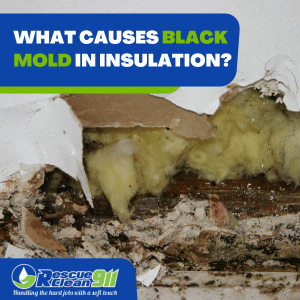 Excess moisture from humid air or plumbing leaks
Excess moisture from humid air or plumbing leaksPoor ventilation in crawl spaces, attics, and wall cavities
Moisture-prone areas where warm air meets cool surfaces
Moisture absorption in insulation material, like fiberglass or cellulose
Mold can also grow when surrounding materials, such as drywall or wood, absorb water, providing additional nutrients for mold development. Once mold spores settle on dirty or moldy insulation, the infestation can spread rapidly if left untreated.
We helped thousands of homeowners by preventing mold growth in insulation. We offer mold inspection, water damage, and bio-hazard.
Call us at 561-782-1392 for further details and mold insulation removal.
Common Signs of Mold on Insulation
Identifying mold on insulation early is critical to prevent mold growth on insulation from compromising your home’s indoor air quality. Signs include:
Musty odor: A persistent musty smell in your attic or walls is often the first indicator.
Discoloration: Black, green, or white mold spots on attic insulation, spray foam, or fiberglass.
Visible moisture or condensation: Water stains, dampness, or wet insulation.
Health symptoms: Allergic reactions, respiratory issues, or other mold exposure symptoms among household members.
Recognizing these signs early allows homeowners to take corrective action before mold affects structural integrity or poses significant health risks.
How Black Mold Develops
 Mold requires three main elements to grow: moisture, a food source (organic material), and the right temperature. In the case of insulation, moisture often comes from:
Mold requires three main elements to grow: moisture, a food source (organic material), and the right temperature. In the case of insulation, moisture often comes from:
Roof leaks or damaged roof sheathing
Plumbing leaks inside the walls
Humid attic spaces or crawl spaces with poor air circulation
Condensation from warm air trapped against cold surfaces
Once moisture accumulates, mold spores settle on the insulation and begin colonizing. Over time, this can lead to mold growth on insulation, which reduces its effectiveness and increases energy bills due to heat loss.
The Dangers of Moldy Insulation
Moldy insulation is more than an aesthetic problem—it can have serious consequences for both health and property:
Respiratory issues: Inhalation of mold spores can trigger asthma, coughing, and other allergic reactions.
Potential health risks: Prolonged exposure may affect neurological function and weaken the immune system.
Structural damage: Mold can compromise roof sheathing, wall cavities, and other surrounding materials.
Reduced energy efficiency: Moist or contaminated insulation cannot properly insulate your home, leading to higher energy costs.
Due to these dangers, many homeowners seek professional mold remediation or hire a mold removal company to ensure the problem is handled safely and effectively. Learn who is responsible for paying for mold remediation.
Steps to Remove Black Mold from Insulation
If you discover black mold in your insulation, immediate action is required. Removal methods vary depending on the type of insulation and the extent of mold growth:
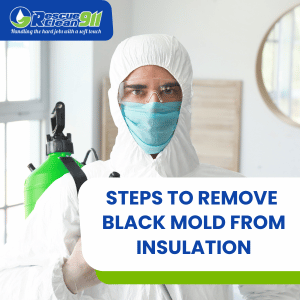 1. Protective Gear
1. Protective Gear
Always wear a respirator, gloves, and eye protection. Mold spores are airborne and can easily be inhaled, posing serious health risks.
2. Removing Contaminated Insulation
Fiberglass insulation: Remove and discard if contaminated, as mold spores can penetrate deep into the fibers.
Spray foam or closed cell foam: May require professional assessment for partial or full removal.
Rigid foam board or cellulose insulation: Replacement is often necessary if mold has developed extensively.
3. Cleaning the Area
Clean surrounding materials with a bleach solution or mold-killing agent.
Dispose of absorbent cleaning materials like rags or sponges.
Ensure the area is thoroughly dried to prevent future mold growth.
4. Prevent Future Mold Growth
Address moisture buildup and roof leaks immediately.
Improve air circulation in attics, crawl spaces, and wall cavities.
Use mold-resistant insulation where possible to reduce risk.
Install or maintain exhaust fans in bathrooms and kitchens.
Preventing Black Mold in Attic and Wall Insulation
Prevention is always better than remediation. Black mold in insulation is a common problem, particularly in older homes. The most common causes of mold growth in insulation are water infiltration and inadequate home insulation.
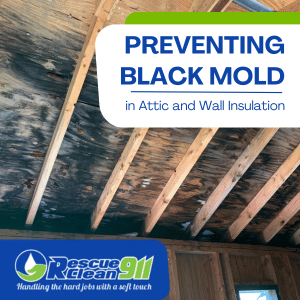 To prevent heavy mold growth in insulation, you should ensure:
To prevent heavy mold growth in insulation, you should ensure:
Your home is appropriately insulated, and any water infiltration is addressed promptly. Check also the indoor air quality for mold prevention.
You should also regularly inspect your insulation for signs of moisture or mold and take corrective action if necessary.
If you have black mold in your insulation, you should remove it immediately and dispose of it properly. You should also take steps to prevent future mold growth, such as fixing any leaks or moisture problems and increasing ventilation.
Insulation is an important part of your home, and you should prevent black mold from growing in it. You can keep your insulation healthy and free of mold by taking some simple precautions.
By implementing these practices, homeowners can effectively prevent mold growth and maintain energy efficiency. Learn how to identify, prevent, and safely remove mold in your air vents to protect your home’s air quality and your family’s health.
Benefits of Mold-Resistant Insulation
Investing in mold-resistant insulation can significantly reduce your risk of mold problems. Benefits include:
Resistance to moisture absorption, limiting mold development
Improved indoor air quality
Reduced risk of respiratory issues and allergic reactions
Enhanced durability and energy efficiency
Peace of mind knowing insulation will last longer in moist environments
Types of mold-resistant insulation include mineral wool, treated cellulose, and closed-cell foam. These materials are naturally resistant to moisture and mold growth on insulation.
What to Do If You Already Have Black Mold in Your Insulation
If you have black mold in your insulation, take immediate action. Black mold can be hazardous and cause various health issues. You may need to call a professional to remove the mold, and you may also need to replace and install new insulation.
Here are a few things you can do if you have black mold in your insulation.
 1. Remove the Mold
1. Remove the Mold
The first step is to remove the mold from your insulation. You can do this yourself, or you can call a professional. If you decide to remove the mold, take all the necessary safety precautions.
Wear a respirator, gloves, and eye protection. It would be best if you also opened all the windows and doors to ventilate the area.
2. Clean the Area
Once you’ve removed the mold, you need to clean the area where it was growing. Use a solution of bleach and water to kill any remaining mold spores. You should also throw away any absorbent materials, like rags or sponges, that you used to clean up the mold.
3. Replace the Insulation
You’ll need to replace it if you have affected insulation. Mold can damage it and make it less effective at doing its job. You should consult a professional to see if your insulation needs to be replaced.
They will use closed-cell foam to press the cells together to stop air and moisture from entering.
4. Prevent Future Mold Growth
Once you’ve removed the mold and cleaned the area, you need to take steps to prevent future mold growth. Ensure the area is kept clean and dry, and ventilate any moist areas. You should also address any leaks or moisture issues that allow mold to grow.
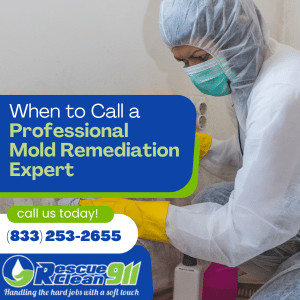 When to Call a Professional Mold Remediation Expert
When to Call a Professional Mold Remediation Expert
Some mold infestations are too extensive for DIY removal. A mold remediation expert or reputable mold removal company can:
Conduct a free inspection to assess the mold type and spread
Safely remove moldy insulation using professional techniques
Ensure proper disposal of contaminated materials
Treat the surrounding areas to prevent future mold growth
Professional remediation is especially recommended if black mold has spread to attic spaces, wall cavities, or HVAC systems, where improper removal could worsen mold problems or pose significant health risks.
Understanding Health Risks of Black Mold Exposure
Exposure to mold in insulation can have serious consequences. People with weakened immune systems, asthma, or allergies are particularly vulnerable. Health concerns include:
Allergic reactions: Sneezing, runny nose, skin rashes
Respiratory issues: Coughing, wheezing, difficulty breathing
Potential neurological symptoms: Headaches, fatigue, and confusion in severe cases
By addressing mold issues early, homeowners can protect their families from significant health risks while maintaining safe indoor air quality.
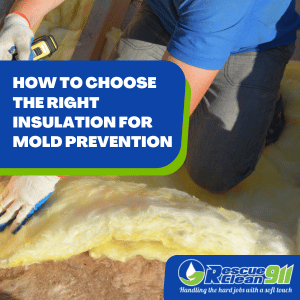 How To Choose the Right Insulation for Mold Prevention
How To Choose the Right Insulation for Mold Prevention
Selecting the proper insulation can prevent black mold from forming:
Fiberglass insulation: Common but can harbor mold if moisture penetrates the fibers.
Spray foam insulation: When installed properly, it seals air leaks and reduces moisture accumulation.
Rigid foam board: Provides insulation and reduces humidity in wall cavities.
Mineral wool: Naturally resistant to moisture and mold development.
Proper installation, combined with good ventilation, significantly reduces the risk of insulation mold and future mold growth.
Benefits of Cellulose Insulation
Cellulose insulation is made from recycled materials like newspaper and cardboard. It is one of the most environmentally friendly types of insulation because it is made from renewable resources. It also has a high R-value, which means it can help your home stay warm in the winter and cool in the summer.
Another benefit of cellulose insulation is that it is treated with fire retardants. It means that it will not contribute to a fire if your home catches on fire. It is also mold and mildew-resistant, which can help you avoid problems with black mold in your insulation.
Black mold in insulation is a serious issue that can compromise both the structural integrity of your home and your health.
By understanding the causes of black mold in insulation, recognizing the warning signs, and taking immediate action, homeowners can prevent mold growth, protect indoor air quality, and maintain safe, energy-efficient homes.
If you suspect that your home has moldy insulation, contact a mold remediation expert for a free inspection and professional mold removal services. Remember, tackling mold problems early is crucial to prevent future mold growth and safeguard your family’s health.
Know the causes of black mold in insulation to prevent further damage in your home.

